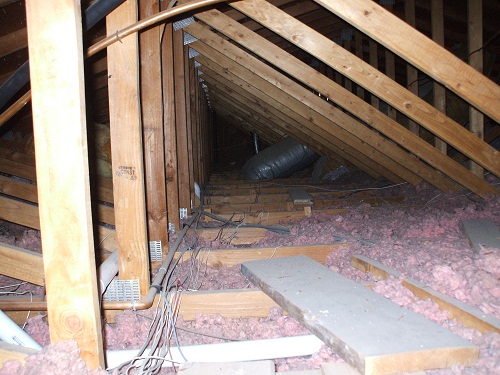If drilling up through the ceiling expect to pass through a thin coat of plaster and 5 8 of sheet rock and 1 2 inch 1 3 cm of strapping to which the sheet rock is secured.
Run a drop through attic.
With a flashlight examine the attic and locate the path that you will use to run the wire between the two locations.
Must be run through bored holes or be attached to a running board.
Climb through the attic access using a ladder if necessary and look into the attic space.
When adding or replacing wiring in finished walls most electricians will attempt to make the horizontal portion of the cable run in the unfinished attic or basement crawlspace areas looping the cable down or up through the wall cavity across the floor or ceiling joists then vertically through another stud cavity to the next wall box opening.
The attic wiring should be protected and secured to ceiling joists or other wood structural supports.
Familiarize yourself with the footing situation.
When running pipes from a slab to an attic use an inside wall.
Protect the wall with a thin piece of cardboard etc.
Methods of proper attic electrical wiring raul no this is not a standard practice and is most likely the result of improper installation of electrical attic wiring.
And while loosely guiding the bit with one hand apply even pressure with the other holding the drill while running it.
For single floor homes with a basement the basement may be the best path.
Current carrying wires are meant to support only their own weight.
One reason you are not allowed to run wires across the bot tom of floor joists is to eliminate the temp tation to use the 12 2 wire for your kitchen gfi as a place to hang laundry.
If no boards or beams run horizontally between the wall studs the pipes can often be fed through the walls up to the attic.
Run the wire or cable to its destination.















































